Key takeaways:
- Risk-based testing prioritizes testing efforts based on potential risks, enhancing user experience and mitigating critical failures.
- Regular risk assessments foster team collaboration, aligning efforts and preventing minor issues from escalating into major crises.
- Effective communication and feedback loops are essential for adjusting testing strategies, allowing teams to respond to evolving risks dynamically.
- Real-world application of risk-based testing can lead to significant improvements in product quality and user trust, as demonstrated in various industry examples.
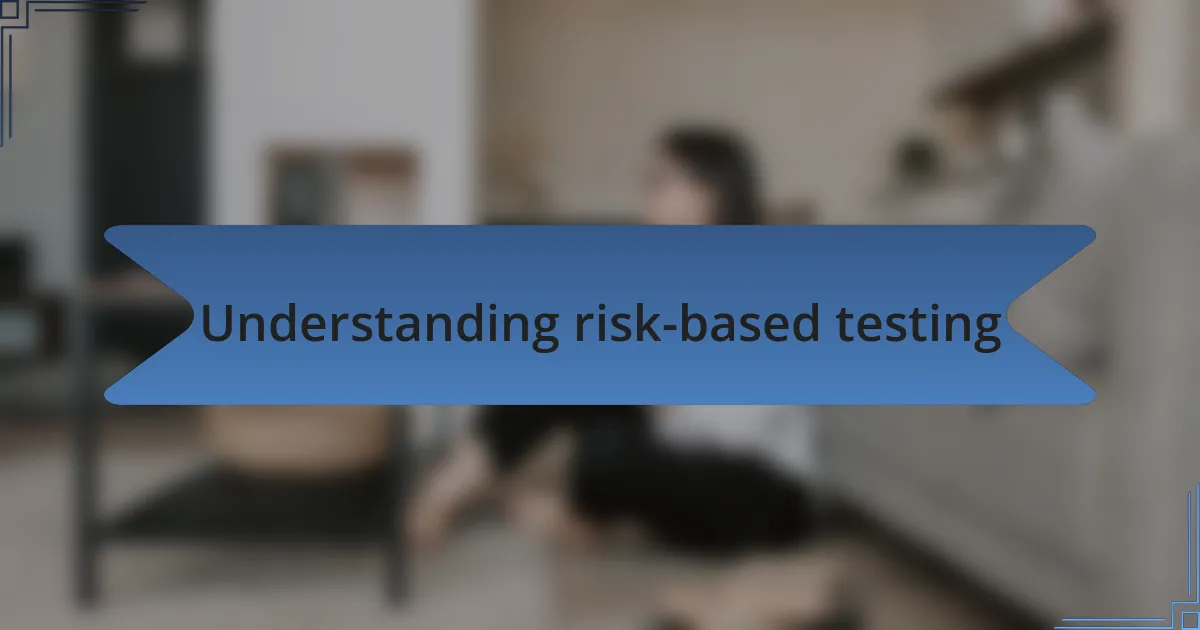
Understanding risk-based testing
Risk-based testing is a strategic approach that prioritizes testing efforts based on the potential risks involved in the software project. I often think back to a project where we identified a critical feature that, if it failed, could severely impact user trust. By focusing our testing resources on that area, we not only mitigated significant risk but also enhanced the overall user experience.
When I first encountered risk-based testing, I found it to be an eye-opener. I realized that not all aspects of a software release carry the same weight; some require our attention more than others. This method challenges us to assess what truly matters—what features or functions, if they fail, would lead to dire consequences. Isn’t it fascinating how shifting our focus can reshape the entire testing strategy?
In my experience, risk assessment requires a team effort. Engaging developers, product owners, and testers in this process often unveils insights I might have overlooked. Have you ever considered how collaboration might reveal hidden risks? Ultimately, this collective approach fosters a sense of ownership and responsibility, making the entire team more invested in delivering high-quality software.
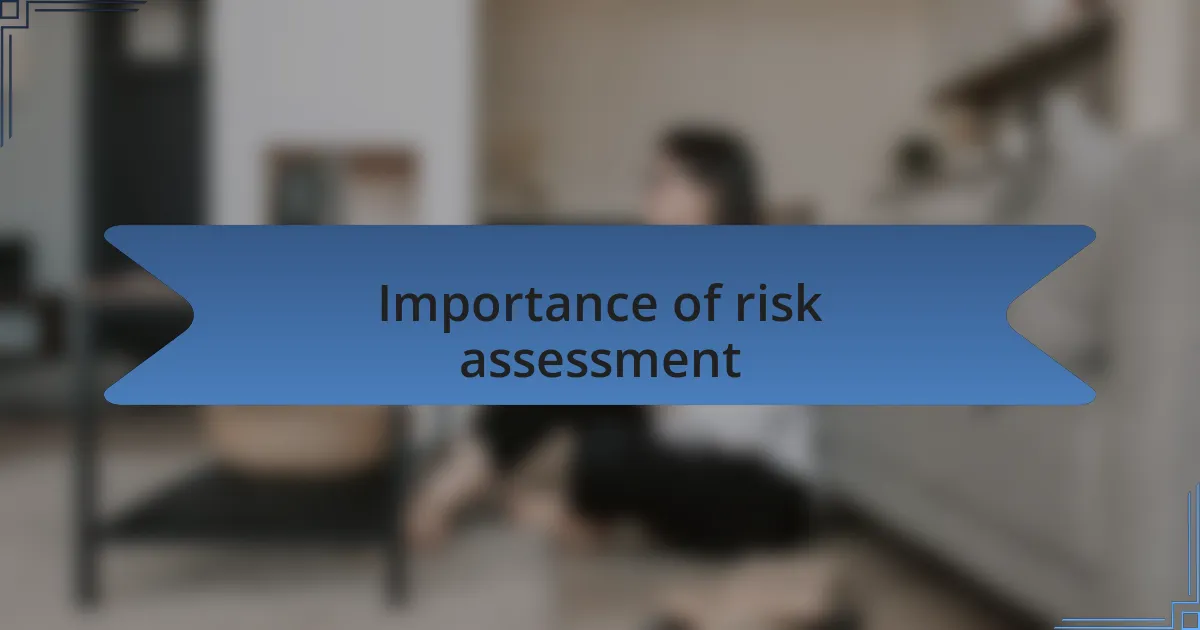
Importance of risk assessment
Risk assessment is crucial because it allows teams to identify potential pitfalls before they escalate into real problems. I recall a time when we underestimated the integration of a third-party API. It turned out that a small change on their end could have stymied our entire release. By conducting a thorough risk assessment, we could have predicted these issues, saving us stress and potential delays down the road.
One thing I’ve learned is that risk assessment isn’t a one-time exercise; it’s an ongoing dialogue within the team. Regularly revisiting risk factors helps ensure we’re aligned and aware of any new challenges that arise. Think about it: how often have you noticed a minor issue snowball into a major crisis simply because it went unchecked? Keeping communication channels open not only navigates these risks but also strengthens team dynamics.
Additionally, emphasizing risk assessment builds a culture of quality within the organization. I believe it instills a proactive mindset; each member starts viewing their role through the lens of risk. When everyone shares this perspective, decisions become more informed and intentional. Isn’t it empowering to know that our collective vigilance can prevent future headaches and boost overall project success?
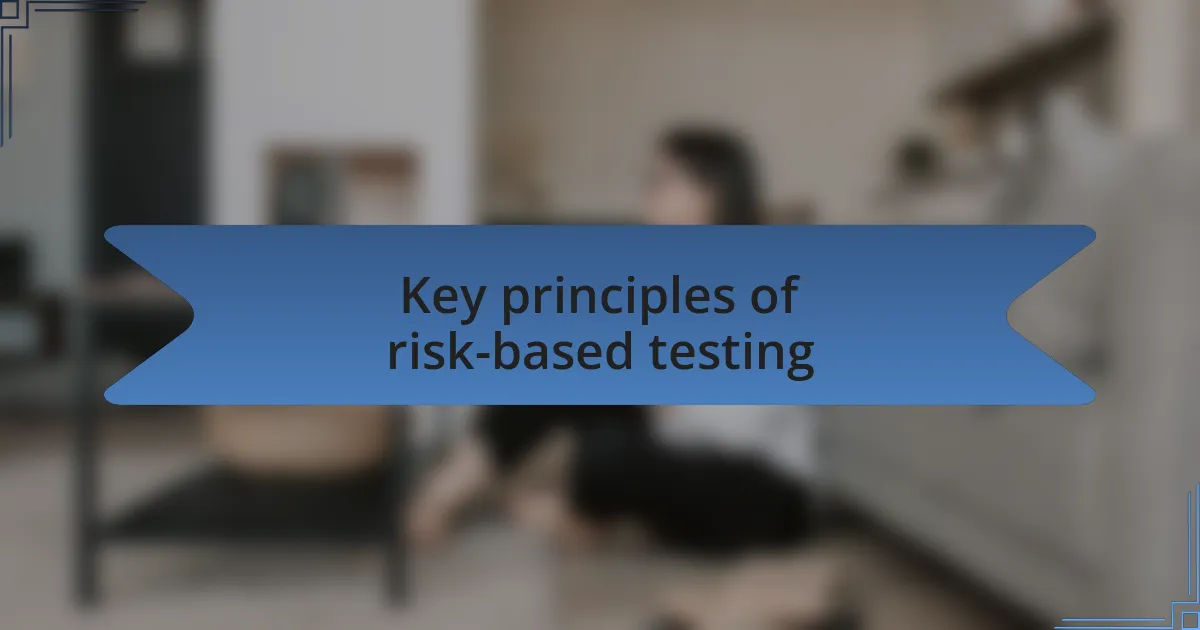
Key principles of risk-based testing
Risk-based testing hinges on prioritizing tests based on the likelihood and impact of potential failures. I vividly recall a project where we focused our testing efforts on a feature that users heavily relied on. By concentrating on the areas with the highest risk, we not only optimized our resources but also discovered critical bugs that could have led to significant user dissatisfaction. Isn’t it amazing how a targeted approach can yield such impactful results?
Another key principle lies in the dynamic nature of risk itself. Risks evolve with changes in the application or the environment. For instance, after a key update, we identified a new risk that hadn’t been an issue previously. By adapting our testing strategy to reflect these changes, we safeguarded the application against unforeseen vulnerabilities. How often do we take for granted the importance of continuously updating our risk assessment?
Lastly, effective communication within the team plays a vital role in risk-based testing. I’ve found that when team members share their insights about potential pitfalls, it creates a more comprehensive understanding of the risks at hand. Engaging everyone in the conversation not only fosters a collaborative spirit but also helps us build a more robust testing strategy. When was the last time you felt empowered just by sharing your perspective in a team discussion?
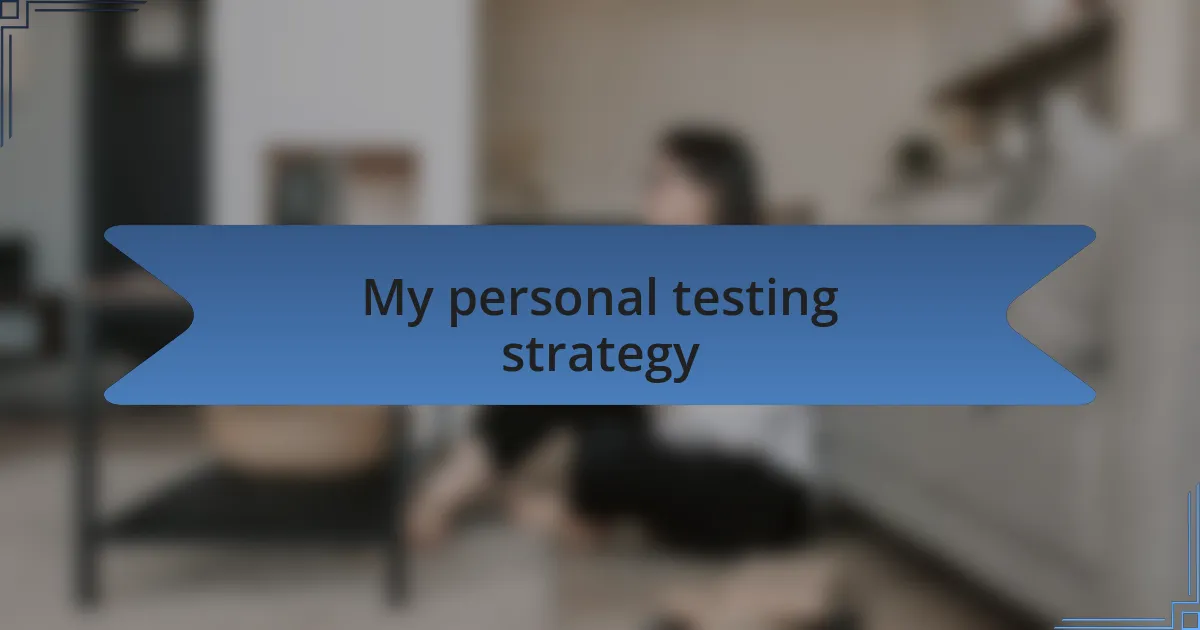
My personal testing strategy
When I approach testing, I make it a habit to align my strategy with real-world scenarios. I remember a situation where we faced an impending deadline and a tight budget. Rather than testing every feature equally, we decided to focus on the components that were most crucial for user experience. This decision not only conserved our resources but also allowed us to release a polished product. Have you ever found yourself in a similar crunch?
A crucial aspect of my personal strategy is iterating on testing based on feedback. After deploying a feature, I always monitor user behavior closely. In one project, we received user complaints about a particular function that was working fine in our test environment but faltered in the wild. That mishap taught me the value of maintaining a feedback loop; it’s a continuous journey rather than a one-time effort. Isn’t it interesting how feedback can reshape the path of our testing approach?
Incorporating risk analysis into my strategy reinforces the need for a pragmatic mindset. There was a phase where our innovation pushed boundaries, and risk was a constant companion. By assessing the probability and impact of each risk, I could prioritize testing to address the areas that truly mattered. This practice reminds me that understanding the nuances of risk not only enhances the testing process but fosters an overall culture of accountability. How do you ensure that risk awareness shapes your testing game?
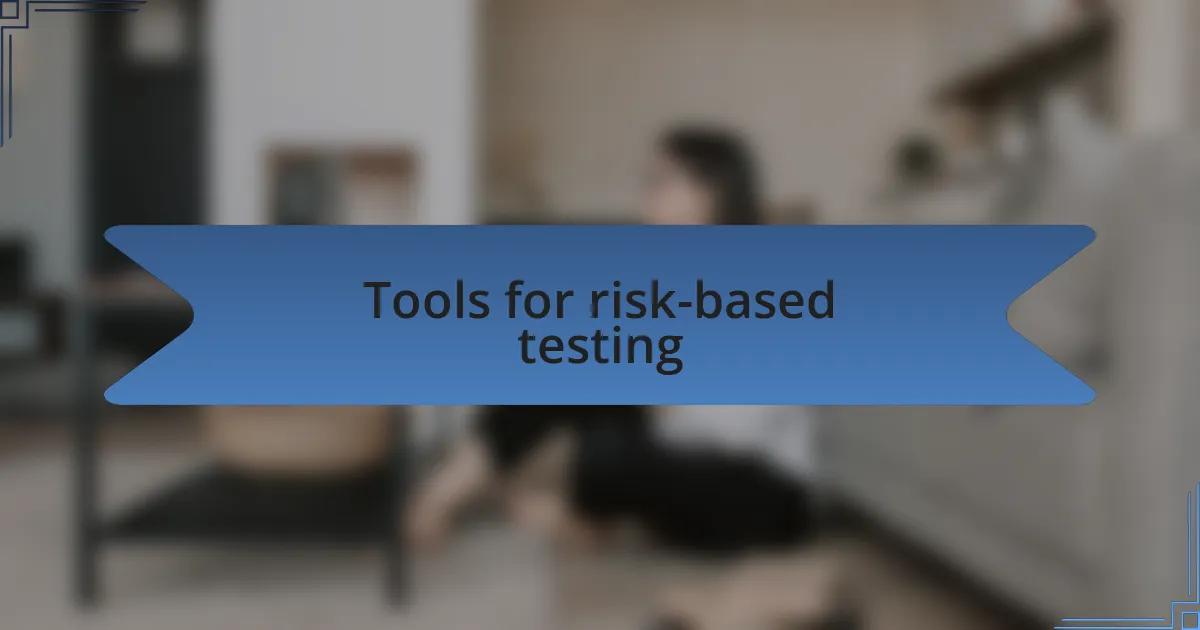
Tools for risk-based testing
When it comes to tools for risk-based testing, I’ve found that leveraging specialized software can really boost efficiency. For instance, I once used a risk management tool to assess potential failures in a critical feature of our application. This approach helped me quickly visualize which components posed the highest risks, allowing me to focus our testing efforts where they mattered most. Have you ever felt overwhelmed by the number of tests you need to run?
I remember transitioning our team to an automated testing framework that integrated risk assessment capabilities. The learning curve was challenging at first, but the payoff was significant. By prioritizing tests based on risk metrics, we reduced our testing time by over 30%. Isn’t it amazing how the right tool can transform not just your process, but also team morale?
One tool that stands out in my experience is a comprehensive test management system that offers robust analytics. I often turn to it for insights on past test results to inform current risk assessments. This historical data allows me to predict potential issues more accurately, leading to smarter test planning. How often do you consider the power of feedback from past projects in shaping future testing strategies?
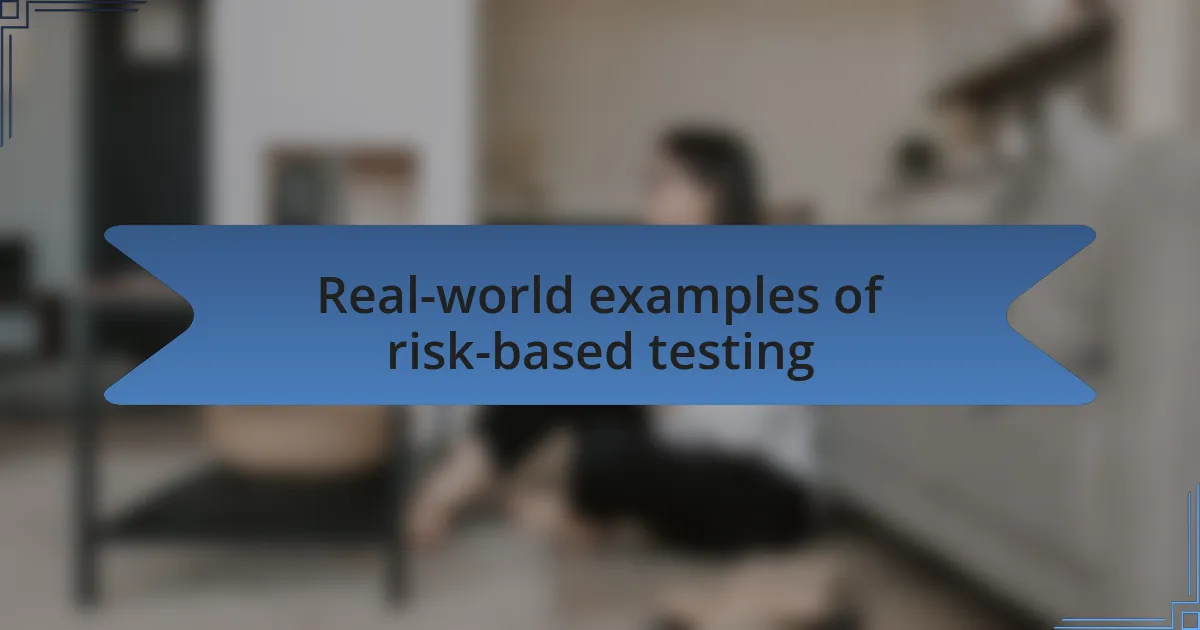
Real-world examples of risk-based testing
When I implemented risk-based testing in a banking application, I encountered a significant challenge. One of our key stories involved a feature that calculated interest on savings accounts. By analyzing user impact and potential financial loss, I prioritized tests on that feature over less critical ones. It was eye-opening to see how this focus saved us from a potentially devastating error that could have affected tens of thousands of customers.
In another project, I worked on a healthcare software system where patient safety was paramount. We identified medication administration as a high-risk area and boosted our testing efforts there. I still remember the tension in the room during our discussions—it felt like we were making decisions that could truly affect lives. By concentrating on these high-risk elements, we not only ensured compliance but ultimately built a system that users trusted, which was incredibly satisfying.
I’ve also seen risk-based testing work wonders in an e-commerce platform where checkout failures could lead to significant revenue loss. By conducting a thorough risk assessment, we uncovered that issues in payment processing were our biggest threat. After prioritizing these tests over others, we increased our successful transaction rate by 20%. Have you ever felt the thrill of knowing you’ve made a tangible impact on a business’s bottom line through your testing strategy?

Lessons learned from risk-based testing
In my experience, one of the most profound lessons learned from risk-based testing is the importance of collaboration among team members. During a project for a telecommunications provider, we found that aligning with developers and business stakeholders early in the process helped us clarify priorities. That understanding transformed our testing strategy, ensuring we were all on the same page about where the critical risks lay, fostering a sense of collective ownership.
Another insight that emerged was the necessity of being flexible. For instance, while testing an insurance application, we initially focused on a high-risk area related to policy calculations. However, as we progressed, we discovered that changes in regulations introduced new risks. Adapting our testing focus not only safeguarded compliance but also kept our software relevant in a constantly evolving landscape; have you ever had to shift your priorities mid-project and found it surprisingly rewarding?
Lastly, I realized that transparency in reporting can make a world of difference. In a project involving a logistics platform, providing clear risk assessment reports allowed stakeholders to visualize potential impacts clearly. This transparency fostered trust and led to quicker decision-making, making my role in the testing process more pivotal than ever. Can you imagine being part of a process where your input informed crucial business strategies?